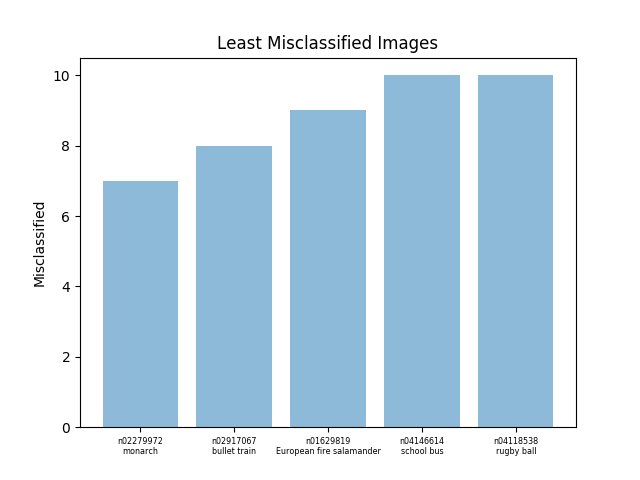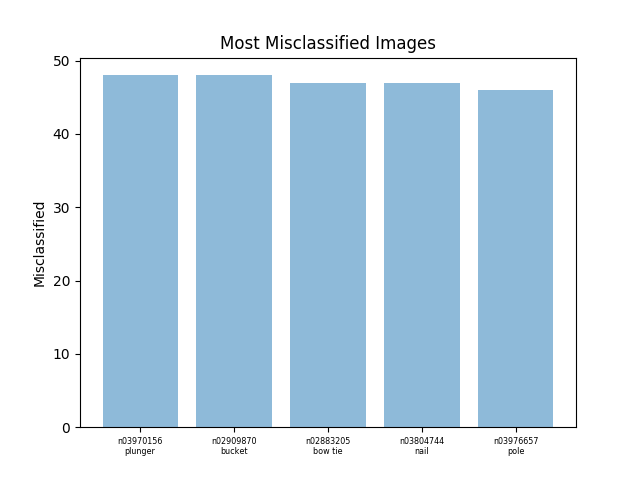bash prep.sh
python src/main.py -h
usage: main.py [-h] [--dataset {mnist,tiny-imagenet-200}]
[--data-dir DATA_DIR] [--batch-size BATCH_SIZE]
[--test-batch-size TEST_BATCH_SIZE] [--epochs EPOCHS]
[--seed SEED] [--no-cuda] [--log-interval LOG_INTERVAL]
[--model {SVM,AlexNet}] [--ts] [--pretrained]
[--optimizer {adam,sgd}] [--momentum MOMENTUM] [--lr LR]
[--features FEATURES] [--classes CLASSES] [--reg]
[--margin MARGIN] [--topk TOPK] [--results-dir RESULTS_DIR]
[--prefix PREFIX] [--save] [--models-dir MODELS_DIR] [--load]
[--model-path MODEL_PATH] [--err]
PyTorch Tiny ImageNet Training
optional arguments:
-h, --help show this help message and exit
--dataset {mnist,tiny-imagenet-200}
name of dataset to train on (default: tiny-
imagenet-200)
--data-dir DATA_DIR path to dataset (default: current directory)
--batch-size BATCH_SIZE
mini-batch size for training (default: 1000)
--test-batch-size TEST_BATCH_SIZE
mini-batch size for testing (default: 1000)
--epochs EPOCHS number of total epochs to run (default: 25)
--seed SEED seed for initializing training (default: 1)
--no-cuda run without cuda (default: False)
--log-interval LOG_INTERVAL
batches to wait before logging detailed status
(default: 100)
--model {SVM,AlexNet}
model to train (default: AlexNet)
--ts data augmentation using torchsample (default: False)
--pretrained use pretrained AlexNet model (default: False)
--optimizer {adam,sgd}
optimizer (default: adam)
--momentum MOMENTUM momentum (default: 0.5)
--lr LR learning rate (default: 0.01)
--features FEATURES number of input features to SVM (default: 12288)
--classes CLASSES number of output classes of SVM (default: 200)
--reg add L2 regularization for hinge loss (default: False)
--margin MARGIN margin for computing hinge loss (default: 20)
--topk TOPK top-k accuracy (default: 1)
--results-dir RESULTS_DIR
path to plots (default: cwd/results)
--prefix PREFIX prefix of the plot (default: default)
--save save model (default: False)
--models-dir MODELS_DIR
path to save model (default: cwd/models)
--load load model (default: False)
--model-path MODEL_PATH
path to load model (default: cwd/models/default.pt)
--err plot error analysis graphs (default: False)
Optional parameters: add prefix to plots; save model; plot error analysis (see 2. 2. 4)
python src/main.py --prefix top1_default --save --err
Optional parameters: use pretrained model; add prefix to plots; compute top-5 accuracy; set epoch
python src/main.py --pretrained --prefix top5_pretrained --topk 5 --epochs 15
Optional parameters: load model; set epoch (test without further training); plot error analysis (see 2. 2. 4)
python src/main.py --load --model-path models/top1_default_tiny-imagenet-200_AlexNet_model.pt --epoch 0 --err
Tiny ImageNet Challenge is the default course project for Stanford CS231N. It runs similar to the ImageNet challenge (ILSVRC). Tiny ImageNet has 200 classes and each class has 500 training images, 50 validation images, and 50 test images. The images are down-sampled to 64 x 64 pixels.
Since the test images are not labeled, I use the validation set as test set to evaluate the models.
Mnist is also used here as a way of evaluating and testing models.
It's always a good idea to start off with a simple architecture.
The SVM model contains a single linear layer that maps input images to label scores. For the sake of linear mapping, each 64 x 64 x 3 image (RGB) in Tiny ImageNet is stretched to a single column and matrix multiplication is performed to get the score of each class.
To measure the quality of the model, we use one of the most common loss functions for Multi-Class SVM: hinge loss. Its objective is for the correct class of each image to have a predicted score that is higher than the incorrect classes by a fixed 'margin'.
For each sample image, given:
We can define the loss function as:
Where and
,
is an integer usually set to
or
. Basic hinge loss has
while squared hinge loss, another commonly used loss function that has a stronger penalty for samples that violate margins, has
.
It's also normal to add regularization to the loss function so that the loss function can be based on both data and weights. But in this case, SVM has already struggled to fit the training data as a linear classifier, adding regularization only results in lower accuracy.
The SVM model can reach 6% top-1 accuracy and 18% top-5 accuracy.
AlexNet contains eight layers: the first five layers are convolutional layers followed by ReLU and Max-Pooling, the last three layers are full connected layers with ReLU and Dropout in between.
The original AlexNet was designed for ImageNet classification, which takes in 224 x 224 x 3 images. To fit our 64 x 64 x 3 images from Tiny ImageNet, we can either modify the architecture of the original model or scale up our input images.
For this project, I trained an AlexNet with a few changes (kernel size, stride, etc.) to the original architecture from scratch as well as fine-tuned a pre-trained AlexNet model provided in PyTorch.
The modified AlexNet (trained from scratch) could achieve 31% top-1 accuracy and 57% top-5 accuracy. The fine-tuned AlexNet could finally reach 46% top-1 accuracy and 72% top-5 accuracy.
Error analysis helps us get a better idea of what kinds of images are tend to be misclassified.
Here are the most and least classified images in the validation set. Generally, images with more distinct patterns and colors are easier to be classified, like monarch butterfly, bullet train, school bus, etc.
The most-misclassified images are those where the object’s shape or color is similar to objects of other classes (bucket) or where the background is too complex and the main object only makes up a small part of the image (plunger, bow tie).

